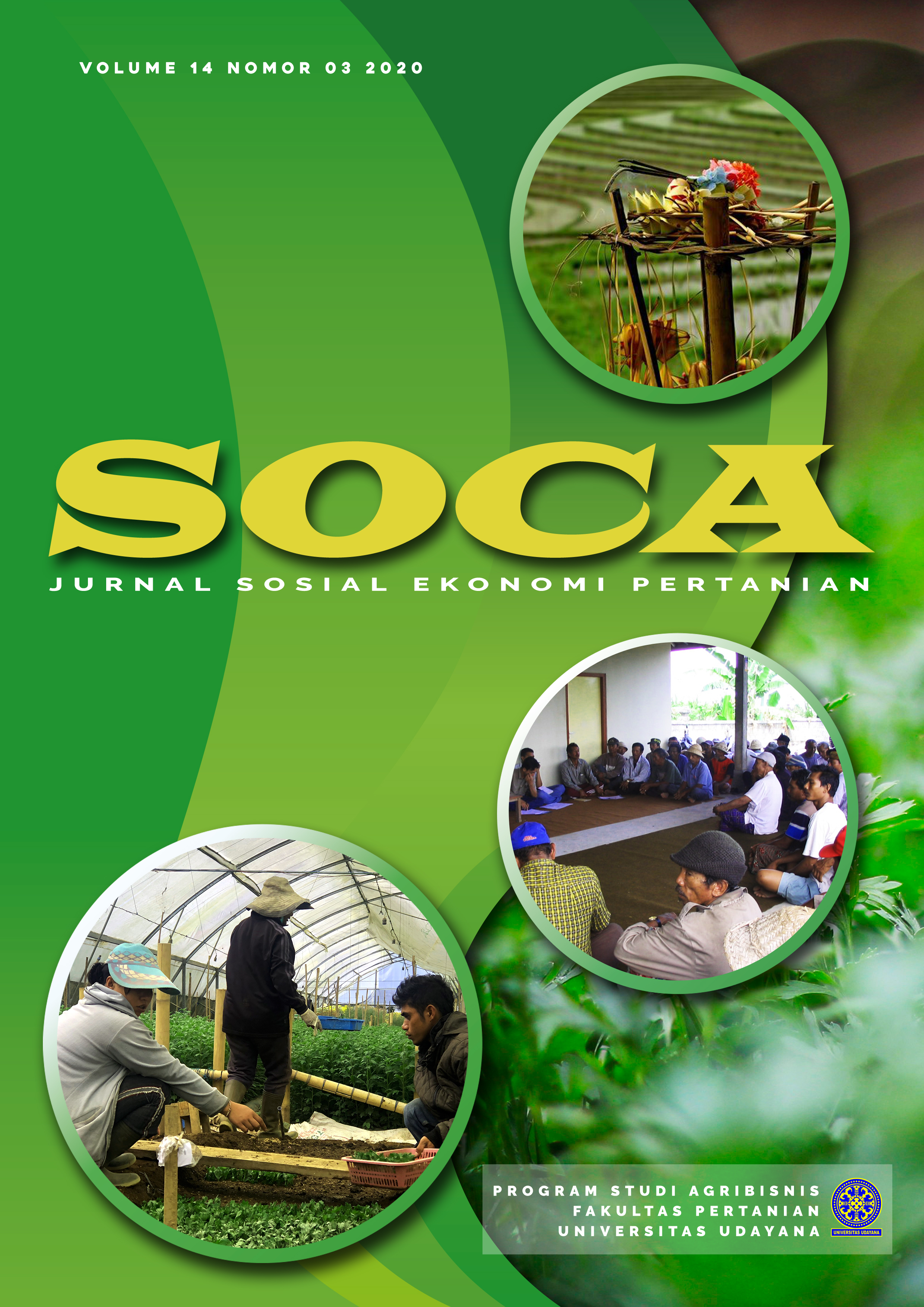The Development Strategy of ‘Cinta Mangrove Park’ Ecotourism In Mempawah Regency
Abstract
Mempawah Regency is an area located on the coast that has a wide area of mangrove forest. The mangrove forest is used to prevent abrasion and as an ecotourism area. This regency has three mangrove ecotourism; they are Mempawah Mangrove Park, Polaria Tanjung Pagar Mangrove Park and Cinta Mangrove Park. Cinta Mangrove Park is the newest mangrove ecotourism in Mempawah Regency. As the latest ecotourism, there are still some shortages, upgrading and developments that need to be done in terms of human resources, facilities and less of promotion. The aim of this research was to determine the development strategy of the Cinta Mangrove Park ecotourism. The location of the research was carried out at the Cinta Mangrove Park Ecotourism in Sungai Bakau Besar Laut Village Sungai Pinyuh Sub-District Mempawah Regency with the consideration that this location was the latest ecotourism that still has a lot of shortages and need improvement. The selected respondents were the key informants. The analysis used was SWOT and QSPM analysis. The results of the research described that the mangrove ecotourism development strategy was a weakness-opportunity (WO) strategy. The main priority of the Cinta Mangrove Park ecotourism development strategy was to seek funding sources and attract investors to collaborate to build tourism facilities. The results of this research were expected to be a contribution in determining policies for the government and society for the development of the Cinta Mangrove Park ecotourism.
Downloads
References
Basyuni, M., Bimantara, Y., Selamet, B., & Thoha, A. (2016). Identifikasi Potensi dan Strategi Pengembangan Ekowisata Mangrove di Desa Lubuk Kertang Kecamatan Brandan Barat Kabupaten Langkat Sumatera Utara. Jurnal Abdimas Talenta Vol 1(1), 31-38.
Dolorosa, E., & Kurniati, D. (2019). Analysis of Object And Attractiveness of Community-Based Ecotourism In Coastal Area of Mempawah Regency. Jurnal Agro Ekonomi Vol 1(1), 53-65.
Hartini, S., Guridno, B., Yulianto, M., & Suprajaka. (2010). Assesing The Used of Remotely Data for Mapping Mangrove Indonesia. Selected Topic for Remote Sensing In 6th WSEAS International Conference on Remote Sensing (Remote 10). Japan: Iwate Prefectural University.
Karlina, E. (2015). Strategi Pengembangan Ekowisata Mangrove di Kawasan Pantai Tanjung Bara Kutai Timur Kalimantan Timur. Jurnal Penelitian Hutan dan Konservasi Alam Vol 12(2), 191-208.
Kurniati, D., Dolorosa, E., & Nurliza. (2020). Akuntansi Sederhana Bagi Usaha Rumah Tangga Pengolahan Buah Mangrove di Kabupaten Mempawah. Jurnal Agro Kreatif Vol 6(1), 29-35.
Mukaryanti. (2005). Pengembangan Ekowisata Sebagai Pendekatan Pengelolaan Sumber Daya Pesisir Berkelanjutan. Jurnal Teknik Lingkungan P3TL-BPPT Vol 6(2), 391-396.
Pendit, N. (1981). Ilmu Pariwisata : Sebuah Pengantar Perdana. Jakarta: PT Pradnya Paramita.
Pratama, A., Idham, H., & A.M, I. (2018). Kearifan Lokal Masyarakat Desa Sungai Bakau Besar Laut Dalam Pengelolaan Hutan Mangrove Kecamatan Sungai Pinyuh Kabupaten Mempawah. Jurnal Hutan Lestari Vol 6(1), 223-229.
Pratiwi, L. P. (2018). Potensi Pengembangan Ekowisata Berbasis Masyarakat Sebagai Upaya Pemberdayaan Masyarakat Perkotaan Di Daerah Aliran Sungai Ayung (Studi Kasus Tukad Bindu Desa Kesiman Kecamatan Denpasar Timur). Jurnal SOCA Vol 12 (1), 75-86.
Putra, C., Anggoro, S., & Kismartini. (2015). Strategi Pengembangan Ekowisata Melalui Kajian Ekowisata Mangrove di Pulau Pramuka Kepulauan Seribu. Jurnal Saintek Perikanan Vol 10(2), 91-97.
Tuwo, A. (2011). Pengelolaan Ekowisata Pesisir dan Laut. Surabaya: Brillian Internasional.
Umam, K., Sudiyarto, & Winarno, S. (2015). Strategi Pengembangan Ekowisata Mangrove Wonorejo Surabaya. Jurnal Agraris Vol 1 (1), 38-42.
Wati, N., Siswoyo, B., & Wardana, L. (2016). Development Strategy of Mangrove Conservation and Ecotourism Beejay Bakau Resort. Journal of Business and Management Vol 18 (5), 116-122.













